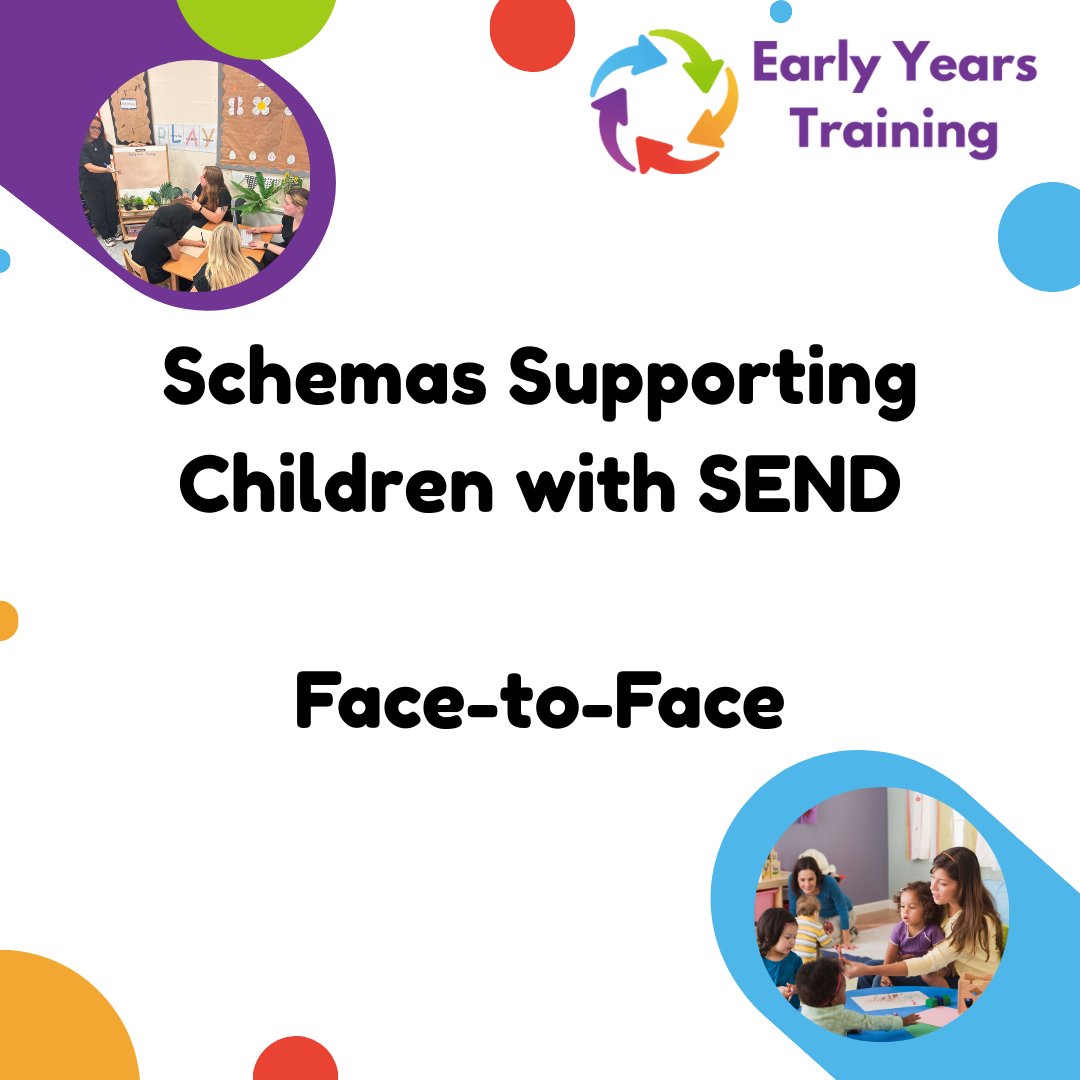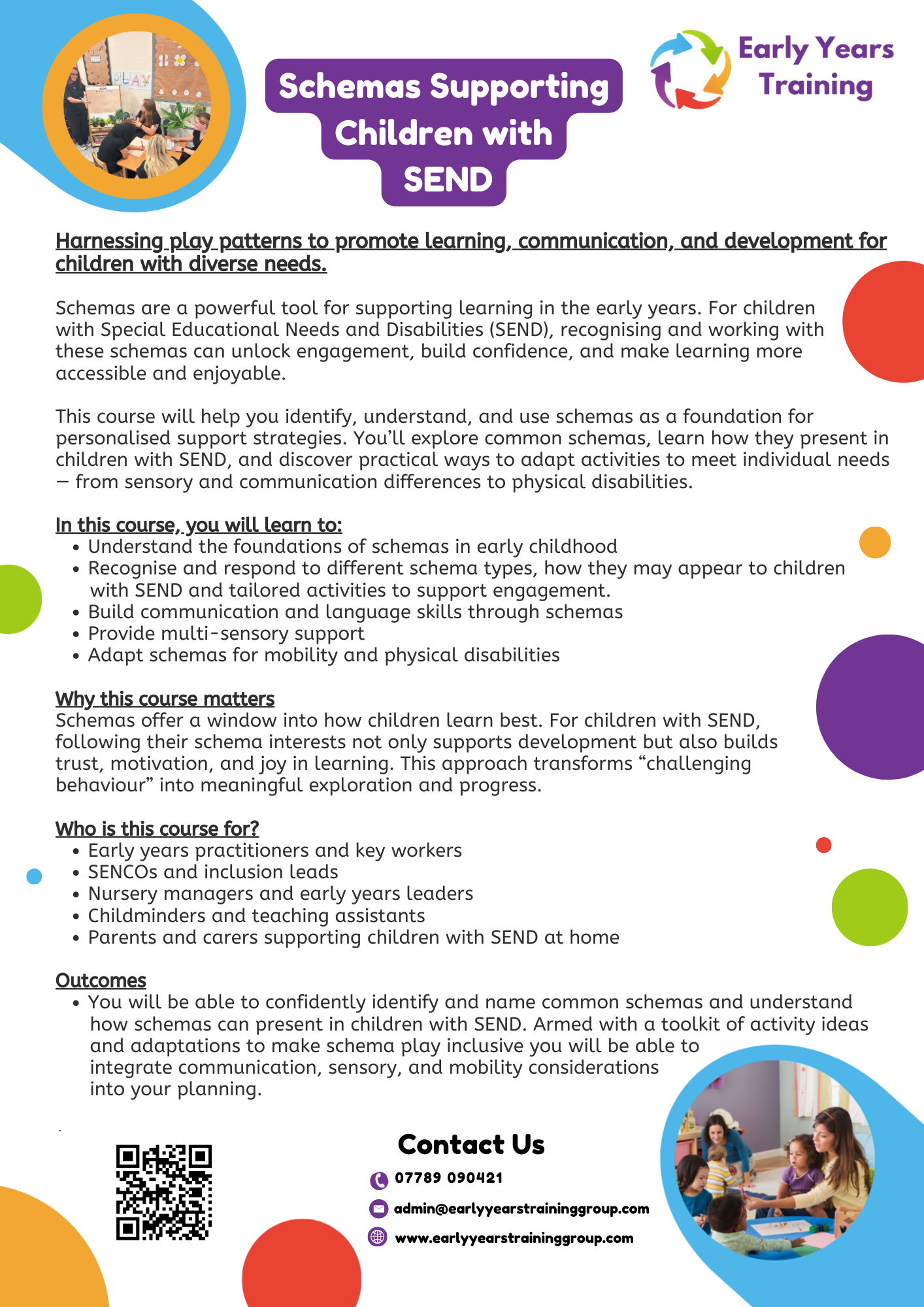Early Years Training Group
Schemas Supporting Children with SEND - Face-to-Face
Schemas Supporting Children with SEND - Face-to-Face
Harnessing play patterns to promote learning, communication, and development for children with diverse needs.
Schemas are a powerful tool for supporting learning in the early years. For children with Special Educational Needs and Disabilities (SEND), recognising and working with these schemas can unlock engagement, build confidence, and make learning more accessible and enjoyable.
This course will help you identify, understand, and use schemas as a foundation for personalised support strategies. You’ll explore common schemas, learn how they present in children with SEND, and discover practical ways to adapt activities to meet individual needs — from sensory and communication differences to physical disabilities.
In this course, you will learn to:
- Understand the foundations of schemas in early childhood
- Recognise and respond to different schema types, how they may appear to children with SEND and tailored activities to support engagement.
- Build communication and language skills through schemas
- Provide multi-sensory support
- Adapt schemas for mobility and physical disabilities
Why this course matters
Schemas offer a window into how children learn best. For children with SEND, following their schema interests not only supports development but also builds trust, motivation, and joy in learning. This approach transforms “challenging behaviour” into meaningful exploration and progress.
Who is this course for?
- Early years practitioners and key workers
- SENCOs and inclusion leads
- Nursery managers and early years leaders
- Childminders and teaching assistants
- Parents and carers supporting children with SEND at home
Outcomes
- You will be able to confidently identify and name common schemas and understand how schemas can present in children with SEND. Armed with a toolkit of activity ideas and adaptations to make schema play inclusive you will be able to integrate communication, sensory, and mobility considerations into your planning.
Share




